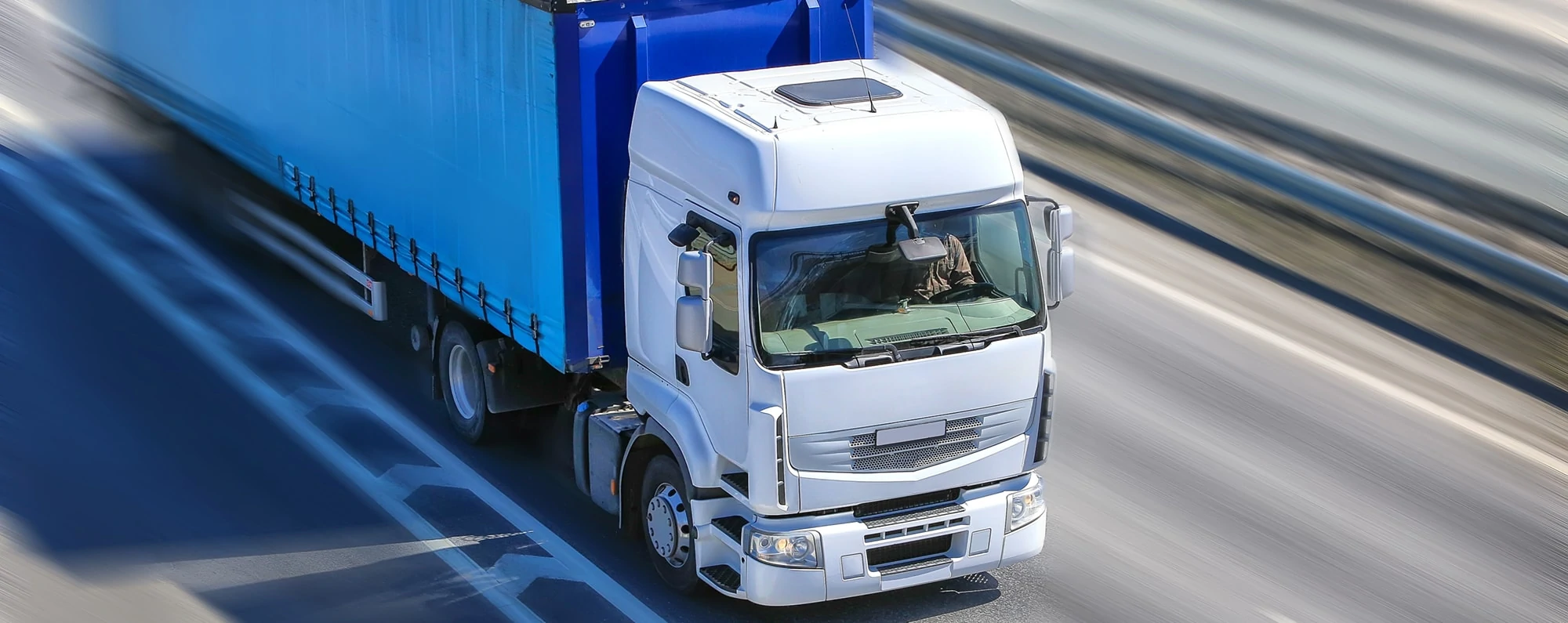The 5 most frequently asked questions about side underrun protection
16-04-2018

Lorries and cyclists continue to be a hazardous combination on the roads. Out of the serious accidents that occur between a lorry and a cyclist, 36% are fatal – usually because cyclists end up underneath the lorry. Good side underrun protection, otherwise known as bicycle catchers, can prevent these types of accidents from occurring. Companies are required to fit lorries and trailers with side protection, but what exactly does that requirement entail?
1. Why side underrun protection?
When an accident occurs, cyclists and other vulnerable road users soon find themselves underneath the wheels of a lorry, resulting in serious consequences, especially if the lorry has open sides. To reduce the number of bicycle casualties and increase road safety, all lorries must be fitted with side protection. These rails between the wheels ensure that cyclists don’t end up underneath a lorry as easily. Side underrun protection should therefore help to increase safety on the roads.2. Who is required to have side underrun protection?
The regulations on side underrun protection are based on EU Directive 89/297/EEC, Side Protection. Since 1995, it is compulsory to fit new lorries and trailers with a permitted maximum mass of over 3500 kg with open side underrun protection on both sides. As of 1 January 2016, lorries and trailers registered after 31 December 1969 and extendible vehicles must be fitted with side underrun protection for road safety reasons.Special vehicles and side underrun protection
Special vehicles that cannot be fitted with side underrun protection for technical reasons are exempt from this rule, but exemption must be applied for from the RDW.Closed side underrun protection only compulsory for LHVs
Currently, closed side underrun protection is only compulsory for LHVs (Longer Heavier Vehicles). Just eight percent of regular lorries and trailers are voluntarily fitted with closed side underrun protection, but it is often discussed whether side underrun protection shouldn’t be made compulsory for all trucks and lorries, simply because it’s a bit safer.3. What types of side underrun protection exists?
Open side underrun protection
There are various types of side underrun protection available. The most well-known is the open side underrun protection that is compulsory for lorries, trailers and semi-trailers. This type of protection usually consists of two fixed rails (steel or aluminium) between the wheels, because this is the cheapest option. A hinged support is more convenient, as this makes it easier to access a spare wheel, batteries etc.But is open side underrun protection safe enough?
Road traffic organisation Veilig Verkeer Nederland (VVN, formerly 3VO) and the Fietsersbond (Cyclists’ Union) don’t think so. If a lorry has ‘open side underrun protection’ (rails between the wheels), cyclists may still end up underneath the lorry. When an accident occurs between a cyclist and a lorry with closed side plates (such as a bus), the cyclist is pushed away and doesn’t end up underneath the wheels. The Fietsersbond therefore believes that closed side underrun protection should be made compulsory for all lorries as soon as possible.Closed side underrun protection
According to various studies conducted by the SWOV Institute for Road Safety Research, a closed bar between the wheels of a lorry is more effective when it comes to road safety due to its shape and larger surface area. The only thing is that the purchase price of closed side underrun protection is a bit higher, so companies usually don’t opt for it.Toolboxes
Instead of open rails or closed panels, you can also opt for toolboxes as a type of side protection. The main advantage of doing this is it allows you to fully utilise the space underneath the chassis. Please note that if you use toolboxes as side protection, these must meet the R73 guidelines. This approval mark must be clearly displayed on the boxes.4. What are the requirements that side underrun protection must meet?
To ensure that side underrun protection also actually increases the safety of cyclists and pedestrians, the government has drawn up a number of rules. These side underrun protection rules are laid down in VN/ECE Regulations no. 73. The main requirements are as follows:- the side protection may start no more than 50 cm behind the rear front wheel and must end 50 cm before the front rear wheel;
- the side protection must consist of one or more horizontally mounted profiles;
- the top edge of the side underrun protection must not be more than 35 cm under the bodywork or the top edge must be 95 cm above the road surface;
- the side protection must not be interrupted by more than 5 cm in a longitudinal direction;
- the profiles must be at least 3 cm in height;
- there may be a gap of no more than 30 cm between the side protection profiles;
- the bottom edge of the side underrun protection must not be more than 55 cm above the ground;
- the side protection must be mounted no more than 12 cm inwards;
- the side protection may also be formed by permanent chassis parts, edge profiles, wheel protection, battery cases, air or fuel tanks and toolboxes; the side protection must be securely attached.
R73 guideline, technical requirements for side protection.
5. What are the benefits of side protection?
Increases road safety
The main benefit of side protection on lorries and trailers, of course, is that it is able to prevent accidents and fatal accidents, thereby increasing road safety. It makes sense to opt for side protection, because various studies have revealed that it’s a bit safer.Additional storage space
If you opt for toolboxes, in addition to the benefits that closed protection brings, you will also benefit from the additional storage space! Toolboxes are very suitable for storing tools, tie down straps, pallet corner protectors, tarpaulins and other materials. There’s no need to store all these items in the cab anymore, thus saving you space. Toolboxes also allow everything to be arranged neatly, so it is easy to access when on the move. Other benefits of opting for closed side protection are its safety image, aesthetic aspects and advertising purposes.For more information about side protection go to our side protection products.


